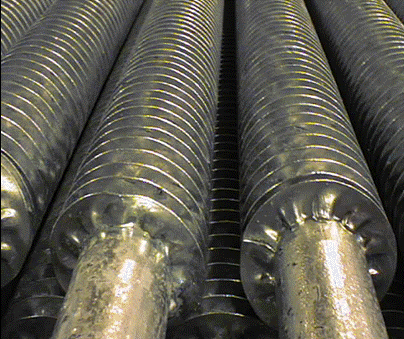Types of Corrosion
Electrolytic or Stray Current Corrosion

Stray current corrosion occurs when metal with an electrical current flowing into it is immersed in water grounded in nature. The current can leave the metal and flow through the water to the natural ground. This will cause rapid corrosion of the metal at the point where the current leaves. Stray direct current (or battery current) is particularly destructive. Stray current corrosion can cause rapid deterioration. If the metal in question happens to be an aluminum part it can be destroyed in a matter of days.
Chemical or Crevice Corrosion
Usually the most common cause of pitting in tubes of stainless steels. Whenever a solid or semi-solid material adheres or lies against a stainless steel surface in contact with an electrolyte, this can cause pitting to occur. Relatively anode and cathode these areas and the type of electrolytes will influence the rate of attack. These crevice or chemical corrosions will spread as products of the original deposit are exposed to other areas of the stainless steel tube.
Stress Corrosion and Corrosion Fatigue
Stresses onto the tube or coil can cause cracks. Stainless steel along with other metals under stress are slightly anodic in relation to the unstressed metal of the same analysis. Austenitic steels under stress are subject to these attack when exposed to certain corrosive agents. Halogen salts, are probably the most serious offenders. It is important to design installations that eliminate sources of stress such as applied loads, vibration, flexing and excessive expansion and contraction due to temperature changes.
Erosion Corrosion
Liquids or gases moving at high speeds may cause erosion corrosion, though these same materials if motionless would not affect the stainless steel. It is believed that the attack is due in part to the destruction of the passive layer on the metals surface. The action of fluids in rapid motion is not always destructive, in some cases this keeps the stainless steel free of deposits and sludge that may cause other types of corrosion.
Galvanic Corrosion This corrosion is a reaction between two or more different metals. The metals must be different because one must be more chemically abrasive than the others for a reaction to take place. When we talk about galvanic corrosion, we're talking about electrical types exchange. All metals have electrical potential because all atoms have electrons, that hold an electrochemical charge.










